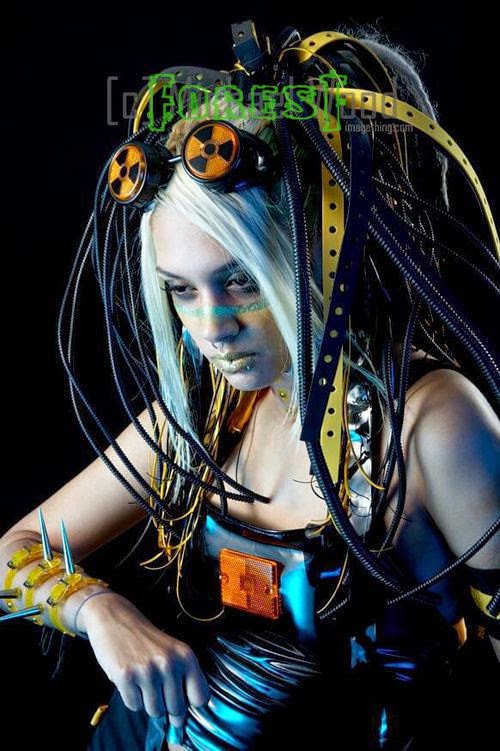Cybergoth neon fashion
“ Today cyber goths tend to wear primarily black clothing with hints of neon colors, as well as clothing made of reflective materials and PVC, and huge platform boots. Their hair extensions or falls often incorporate a bright color and multiple piercings are typical. Goggles are often worn. Some cyber goths also wear gas masks or (in what appears to be a kind of medical fetish) shiny PVC doctors’ masks.”
Nancy Kilpatrick indicates that David Bowie‘s look in the 1970s is the initial inspiration for the style, and that Fritz Lang‘s Metropolis provided the prototype for cyber aesthetics.Kilpatrick also notes a link to cyberpunk science fiction, particularly William Gibson‘s Neuromancer.
The black-and-monochromatic juxtaposition can take a variety of forms, including brightly colored hair and make-up, cybernetic patterns such as live LED circuit boards, body modification, gas masks and goggles (especially aviator-style), typically worn on the forehead or around the neck rather than on the eyes. The most common use of a theme color is in the hair or eye make-up. Artificial, extended hair or “falls” are sometimes used to create this added effect. Falls can be made of various materials, ranging from yarn to fluorescent tubing to electrical wiring. Popular club gear for cybergoths includes tight black pants, tight black vests or shirts cut from ripped, solid or fishnet fabrics, resembling costumes from 19th Century Gothic novels or early black and white horror films from the mid-20th century. Companies that specialize in the style include Cyberdog, DANE in London, Pen & Lolly Clubwear based in Sheffield (UK), Lip Service, based in Southern California, Robotic Kitty Fashions which specializes in custom, made to order cybergoth gear, based in Chicago, and Diabolik, a shop in Montreal.
More Goth than Cybergoth. Personally i think there should be a Cyberflapper genre by now.























